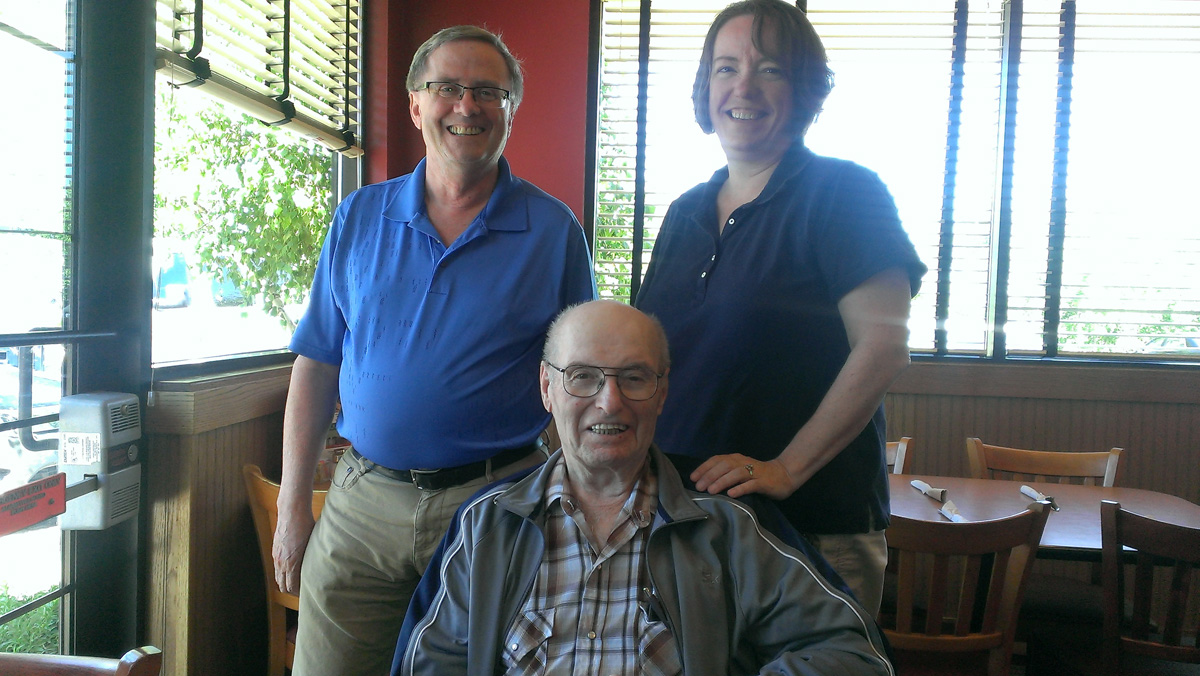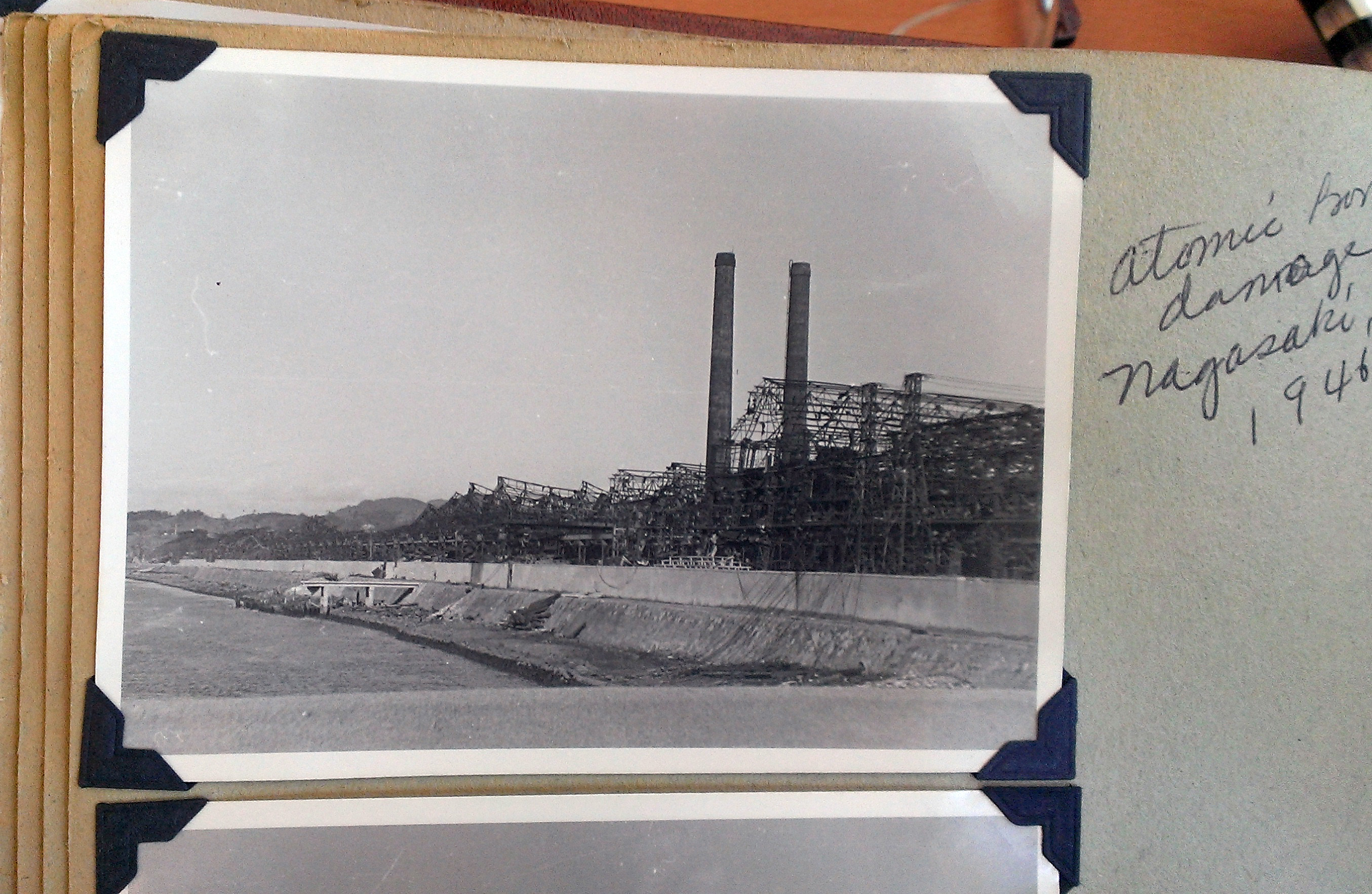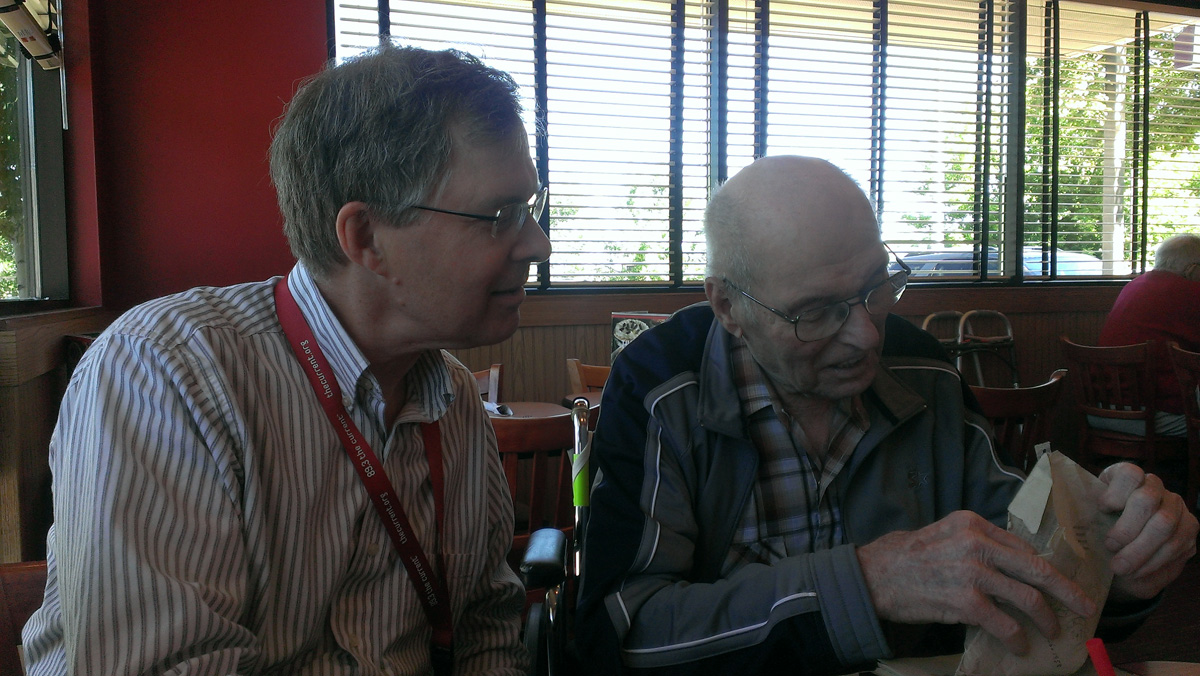As of today, I’ve written 14,318 NewsCut posts and I can tell you a story about most of them, including my favorite interviews with people who made me thankful I got into this line of work.
If there are afternoons I’ve enjoyed more than August 7, 2013, I can’t think of them.
That’s the day I sat with Ernie Crippen, then 91, at a Perkins in Buffalo, if I recall correctly.
I wanted to hear history and he didn’t disappoint. Ernie was a great guy.
Ernie died yesterday, his daughter, Amy (who wrote about him in 2015), tells me today. Going through his papers, she found several copies of the NewsCut post I’d written. He never got into the internet, so he photocopied them and handed them out.
I have the ability and honor to tell people’s stories and that’s how we live forever. Here’s the thing: You have that ability and honor too.
I always intended to take Ernie and his daughter up on their standing invitation to make lefse with them sometime. I never got around to it.
There’s a lesson there.
Here’s the 2013 post:

Sixty-eight years ago tomorrow, the United States dropped a nuclear bomb on Nagasaki, three days after it dropped one on Hiroshima. The day will go unmentioned, just as the anniversary of Hiroshima generally went unrecognized on Tuesday. It wasn’t long ago that the end of war in the Pacific had significance for a country that shared the experience of a world war. But those days are gone and the few people left who lived the history soon will be.
That’s why I don’t turn down any opportunity to talk to the people who fought the war in whatever capacity; there aren’t many left.
So when Ernie Crippen of Buffalo started a sentence in our conversation yesterday with, “when we were being bombed and strafed on Guadalcanal,” I was immediately aware that it was the first — and probably the last — time someone will ever say that to me, just as I was similarly aware last week when a veteran in Luverne showed me a scar and said, “I got that parachuting into Bastogne.”
We get many opportunities in our lives to learn history from those who live it, but we take advantage of precious few of them. And time, as it has forever, is running out. Mr. Crippen has the benefit of his children, Mike and Amy, who have helped him preserve his history.

Crippen, 91, like thousands of other Minnesota kids, saw the military draft coming in 1942 when he was cutting timber in Bemidji. So he joined the Navy for a six-year engagement as a Seabee — the Navy’s construction brigades.
“The fighting was mostly over when we arrived on Guadalcanal,” he told me while I leafed through his meticulously-kept scrapbooks yesterday. And by “mostly over,” he meant, except for the occasional attacks by Japanese planes trying to kill him. In April 1943, he wrote in an autobiography, he was part of a crew unloading supplies from a ship offshore when an attack came. All the regular crew had gone ashore, so the Seabees took the ship into open water, shooting down one plane in the process. Some of the men shielded themselves from bullets with the only thing they had nearby: canvas.
You don’t get a lot of stories like that from kids in Bemidji anymore. Or about the time Bob Hope and Jerry Colonna sat with him at dinner before a USO tour, the bugler who got into trouble for playing “Blues in the Night” instead of Taps or about being told he was to be part of the U.S. invasion force of Japan. “We were told the casualties might number 750,000,” he said. “It was sobering.”
“What was the last thing your father said to you before you went off to war?” I asked.
“I remember it clearly,” he said. “We were sitting at the depot in Bemidji and I said, ‘I might not come back.’ He said, ‘You have to turn that around and think different.'”
The atomic bombs brought Japan’s capitulation. A month later, the kid from Bemidji was working the docks in Sasebo, Japan, a bombed-out former Japanese Navy base. And a few months after that, he was walking through what was left of Nagasaki.

“It was amazing to me at the time that something dropped from the sky could turn steel and concrete into nothing but dust,” he said.
He couldn’t show that picture to anyone until he got home to Bemidji. The military didn’t allow anyone to send photos of the destruction home. Technically, servicemen weren’t supposed to have cameras, but, as he had during the rest of the war, Crippen kept notes and pictures, knowing that someday he’d be sharing it.
His stops read like a who’s who of war in the Pacific: Guadalcanal, Saipan, Tokyo, the rest of the Solomons, New Caledonia, and the Aleutians.
For the veterans of it, World War II was life’s biggest paradox. A gruesome habit of nations’ instinct to kill another’s soldiers provided the opportunities to see parts of the world most people will never see, and a seemingly endless number of friendships that survive through post-war “real life,” which for Mr. Crippen included years as an engineer for MnDOT and a wedding photography business with his wife.
But there’s no such thing as “endless” in life. As he showed me a scrapbook of his pictures, Crippen noted that most everyone in it is dead now. His construction unit stopped its annual reunions in 2006; There weren’t many people left or able to attend.
But next week, there’ll be one more. A few weeks ago, the family of an Indiana man found Crippen after a search. The two men had served together. The man from Indiana recently had a stroke and wanted to see Crippen again. Next week, they’ll meet halfway — Iowa — and turn back time.
Mr. Crippen will bring the scrapbooks and history in the first person with him.

